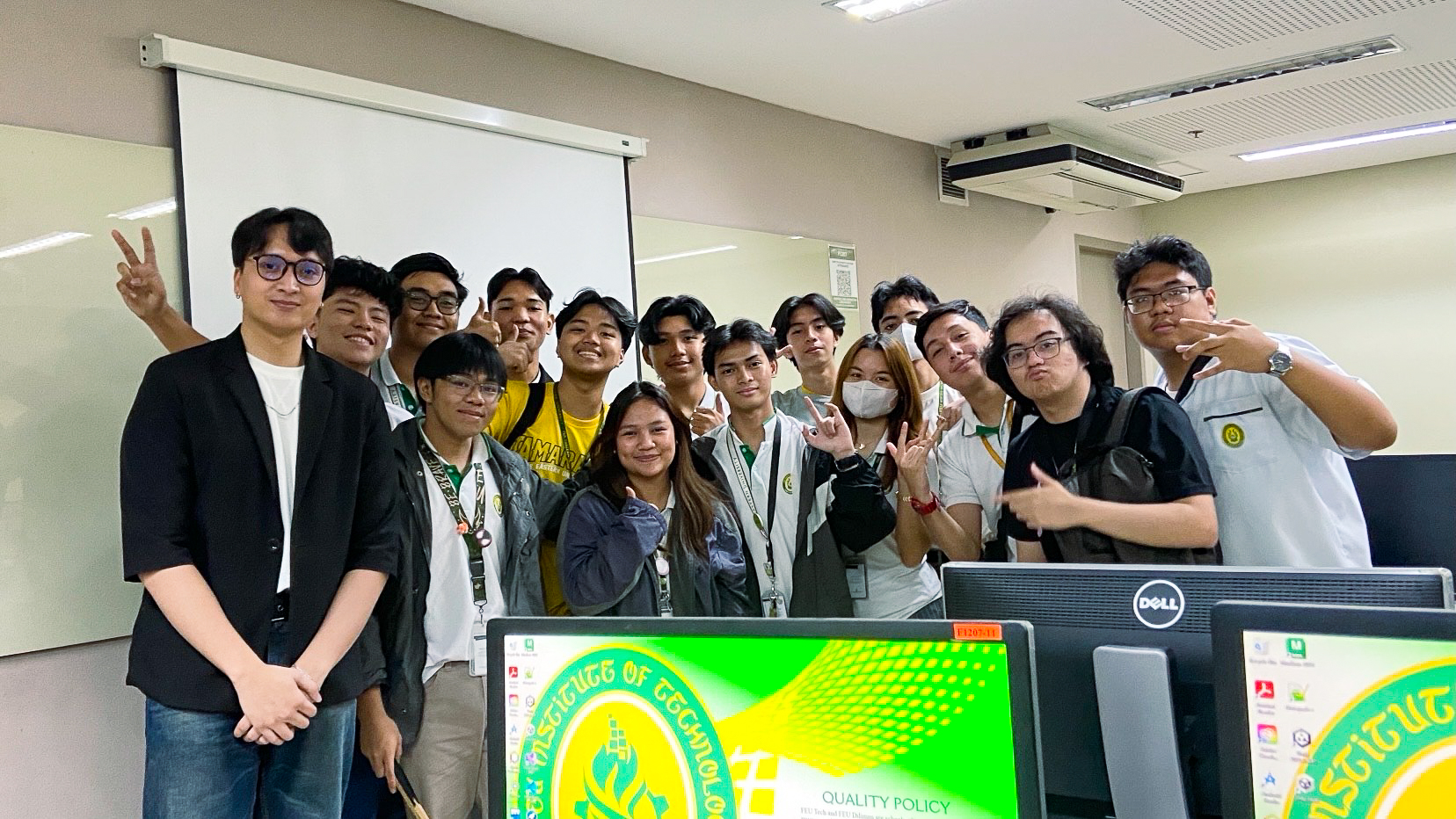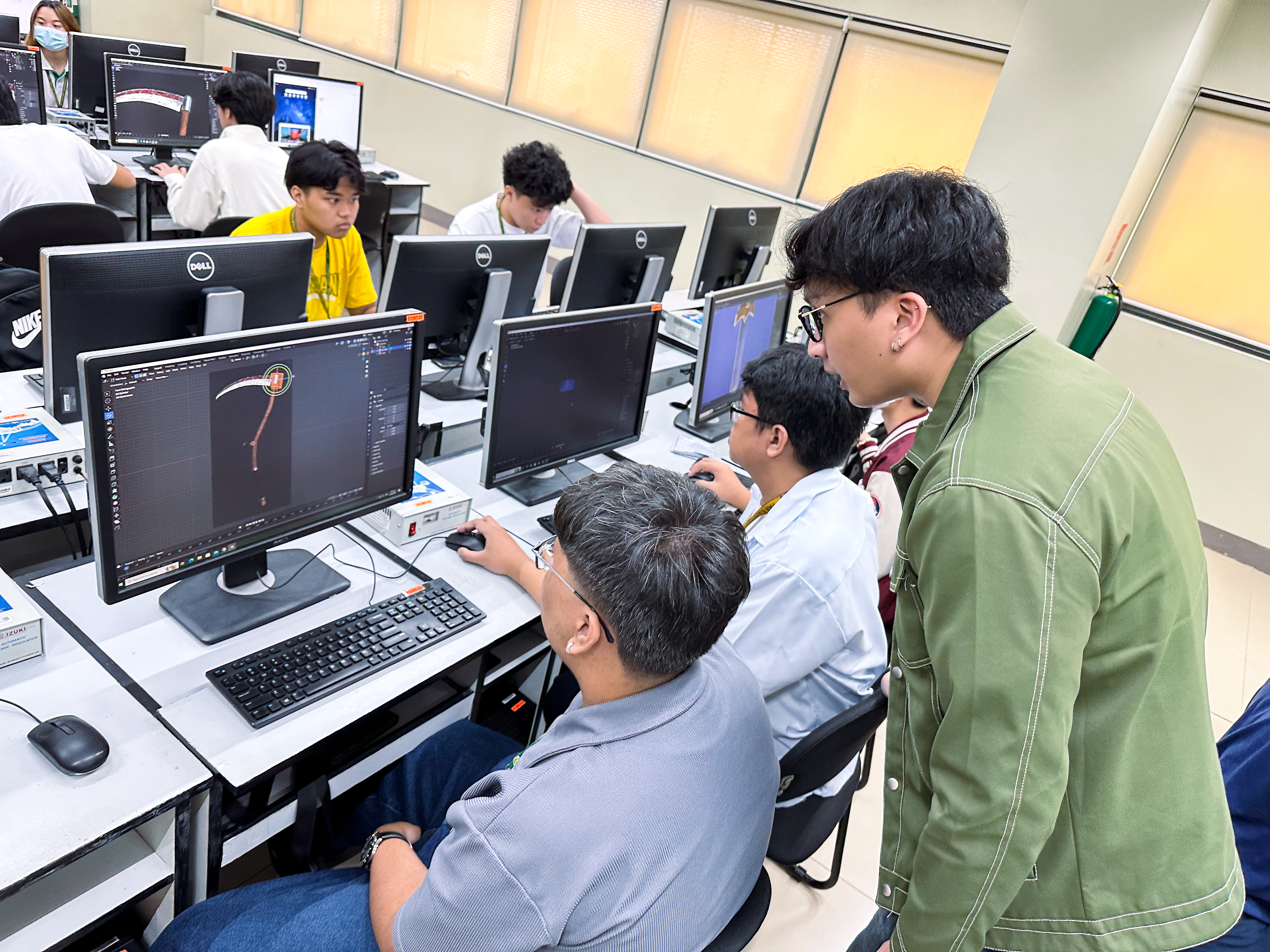Empowering Future Professionals: EdITH 3D Artist Leads Lessons in Immersion Program
Senior high school students learn the basics of 3D modeling from the Educational Innovation and Technology Hub’s resident 3D artist.
March 29, 2025
Newsroom
To empower students by equipping them with the relevant skills for a fast-paced, technology-driven world, Clark Raven B. Maranan, a seasoned 3D Artist from the FEU Institute of Technology’s Educational Innovation and Technology Hub (EdITH), taught an immersion program from 12 noon to 5 p.m. on Mondays, Tuesdays, and Thursdays, since March 17 to 28, 2025. The program was held in collaboration with the FEU Institute of Technology’s Admissions and Enrollment Office (AERO) and the Far Eastern University Senior High School.

Maranan's week-long lessons delved into the practical applications of 3D modeling, showcasing how this skill is not just about artistic expression but a crucial asset in fields ranging from architectural visualization to product design and medical simulation. By focusing on the 'why' behind the 'how,' he empowered students to see 3D not just as a technical skill but as a powerful language for innovation, making them realize the relevance and importance of this skill in their future careers.
The collaboration between EdITH, AERO, and the FEU Senior High School marks a significant shift in educational philosophy: preparing students for the jobs of tomorrow, not just the jobs of today. This forward-thinking approach was evident in the immersion program, which was not merely a workshop but an investment in the future workforce. The program effectively bridged the gap between academic theory and real-world application, exposing students to industry-standard 3D applications and fostering a deeper understanding of their potential.
How 3D applies in today’s world
The proliferation of 3D technology has fundamentally reshaped numerous industries, embedding itself into the core of modern design, entertainment, and manufacturing. For instance, in architectural visualization, 3D models create realistic representations of buildings before they are constructed, saving time and resources. In video game development, 3D models bring characters and environments to life, enhancing the gaming experience. In medical imaging, 3D models help visualize complex structures and aid in surgical planning. And in product prototyping, 3D models allow for rapid iteration and testing. This capacity to create immersive and interactive experiences has driven a surge in demand for professionals proficient in 3D software and techniques. Consequently, the ability to construct and manipulate virtual environments has transitioned from a niche skill to a highly sought-after expertise.
As the digital landscape expands, proficiency in 3D design is rapidly becoming a lucrative career path. Industries are actively seeking individuals who can translate concepts into compelling visual representations. This demand extends beyond traditional creative fields, encompassing sectors like engineering, marketing, and education.

With virtual and augmented reality advancements, the need for skilled 3D artists and designers is poised to escalate further, solidifying 3D proficiency as a valuable and increasingly essential asset in the contemporary job market.
Teaching Relevant Skills for the Technology Age
Learning the fundamentals of 3D modeling and design provides students with a foundational skillset directly applicable to these rapidly expanding sectors. Furthermore, 3D design fosters crucial cognitive skills that transcend specific industries. Spatial reasoning, problem-solving, and creative visualization are honed through manipulating and constructing objects in a digital three-dimensional space. These skills are vital for STEM careers and fields like marketing, where visual communication is paramount, and even social sciences, where data visualization can reveal complex patterns.

However, theoretical knowledge alone is insufficient. This is where industry immersion programs become indispensable. These programs place students within real-world professional environments, giving them firsthand experience of how 3D design is applied in practice. This immersion bridges the gap between classroom learning and industry demands, allowing students to observe and participate in projects, interact with professionals, and gain invaluable insights into the nuances of their chosen field.
These immersion programs provide practical experience and foster networking opportunities, opening doors to potential internships and future employment. Students gain hands-on experience in 3D modeling and design, learn to work professionally, and develop a portfolio. Moreover, exposure to real-world challenges and deadlines instills a sense of professionalism and resilience, which is highly valued in any industry. Teaching 3D and promoting immersion programs is an investment in our student's future, equipping them with the skills and experiences necessary to thrive in an increasingly complex and digitally driven world.
Patricia Bianca S. Taculao-Deligero is a Bachelor of Arts in Journalism Graduate from the University of Santo Tomas. She has an extensive portfolio from working in various local media outlets, with articles focusing on lifestyle, entertainment, agriculture, technology, and local government units, among other subjects. Her specialty is in feature writing. She is also proficient in news writing.
